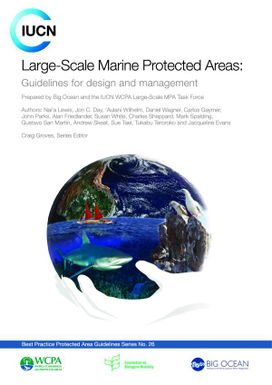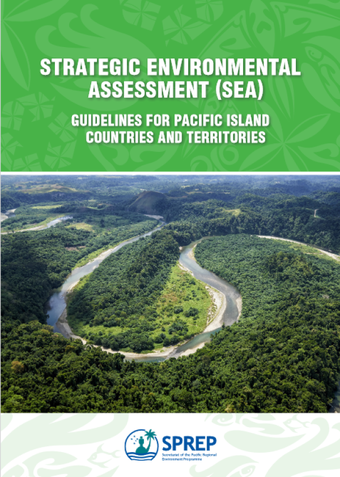Large-Scale Marine Protected Areas : Guidelines for design and management
- Description:
- When the government of Australia created the Great Barrier Reef Region (346,000 km2) in 1975 and subsequently declared parts as sections of the Great Barrier Reef Marine Park, the protected area greatly surpassed all existing marine protected areas (MPAs) in both scope and scale. Yet it would be nearly 30 years before a second LSMPA or areas greater than 150,000 km2 (see Box 1) was declared. Established as the Northwestern Hawaiian Islands Coral Reef Ecosystem Reserve in 2000, the new site was the first truly remote LSMPA. In 2006, the area was slightly expanded and recognised as the Papahanaumokuakea Marine National Monument (362,074 km2), and expanded again in 2016 (1,508,870 km2) to become the largest MPA globally
- Display date:
- 2017
- Collections:
- Secretariat of the Pacific Regional Environment Programme (SPREP)
- Publisher:
- International Union for Nature Conservation (IUCN)
- Content partner:
- Secretariat of the Pacific Regional Environment Programme (SPREP)
- Availability:
- Not specified
-
Copyright status: All rights reservedFind out more about what you are able to do with this itemThis item is all rights reserved, with means you'll have to get permission from Secretariat of the Pacific Regional Environment Programme (SPREP) before using it. For more information, please see our use and reuse page.What can I do with this item?Non-infringing useNZ copyright law does not prevent every use of a copyright work, and this item may be hosted by an international institute or organisation. You should consider what you can and cannot do with a copyright work.No sharingYou may not copy and/or share this item with others without further permission. This includes posting it on your blog, using it in a presentation, or any other public use.No modifyingYou are not allowed to adapt or remix this item into any other works.No commercial useYou may not use this item commercially.
Related items
Welcome and warm Pasifik greetings
The information on this site has been gathered from our content partners.
The names, terms, and labels that we present on the site may contain images or voices of deceased persons and may also reflect the bias, norms, and perspective of the period of time in which they were created. We accept that these may not be appropriate today.
If you have any concerns or questions about an item, please contact us.


